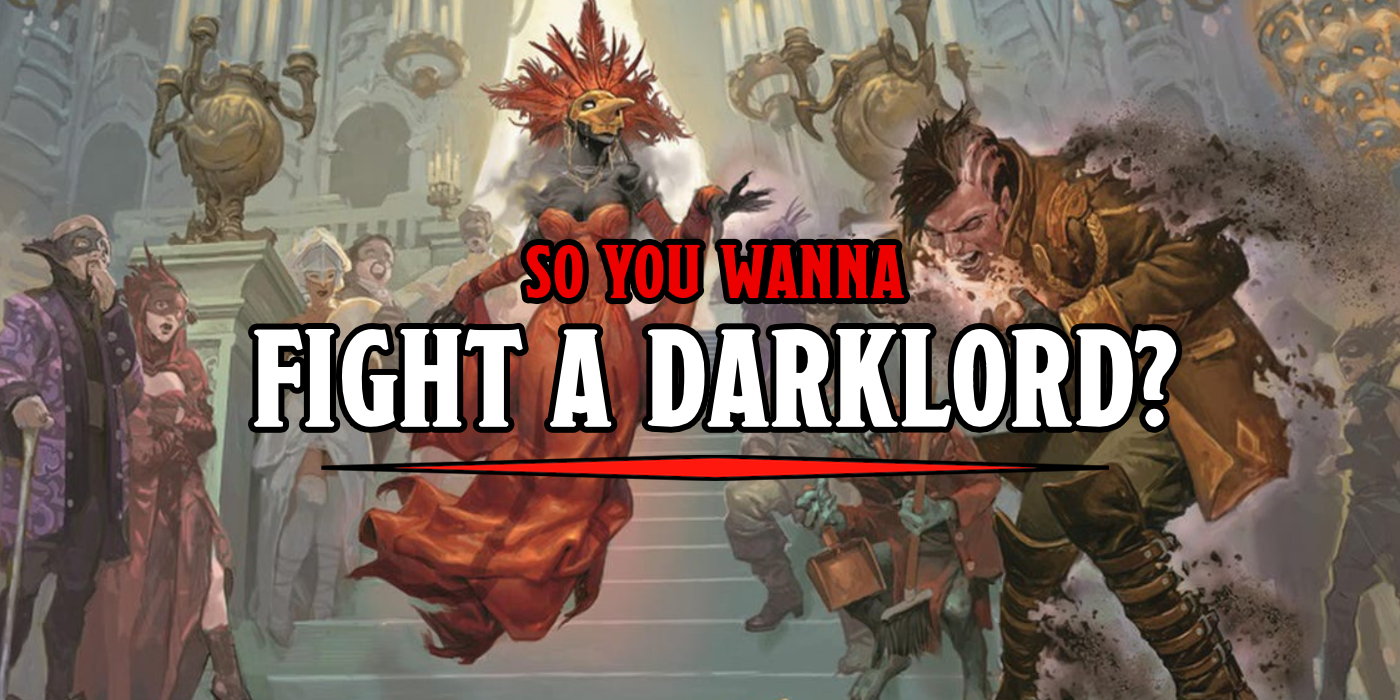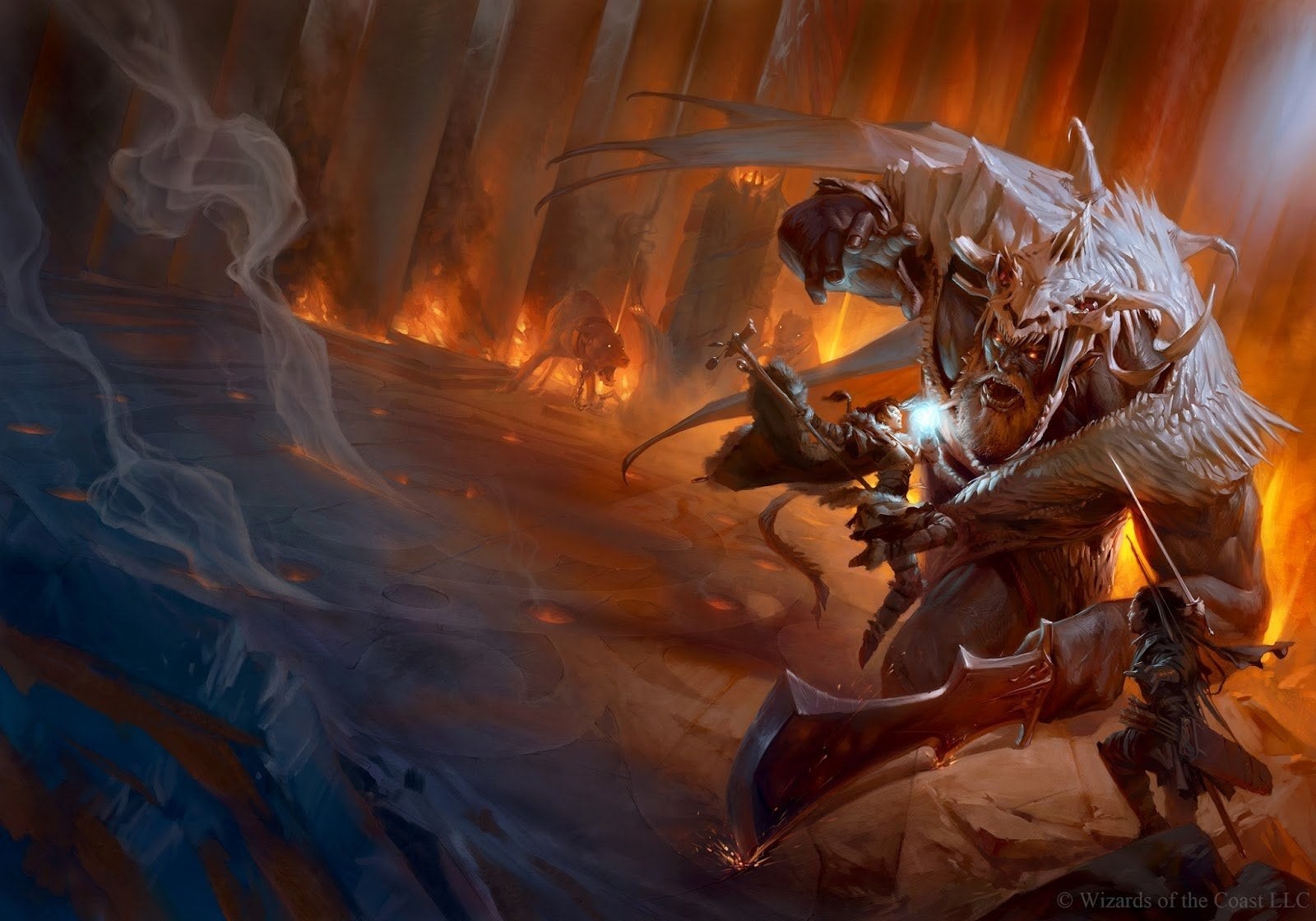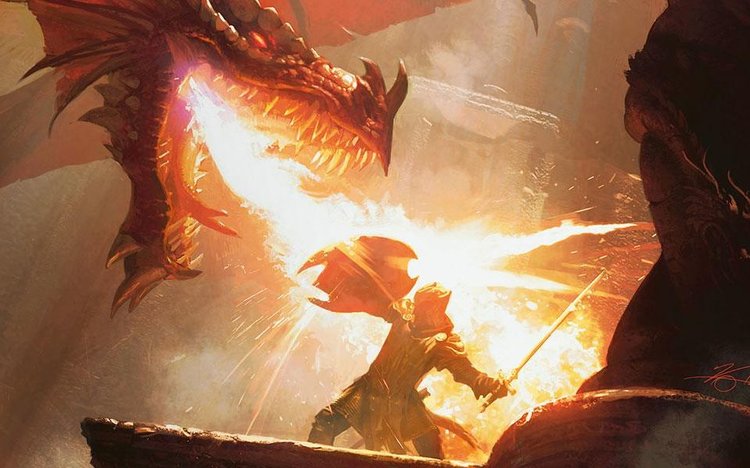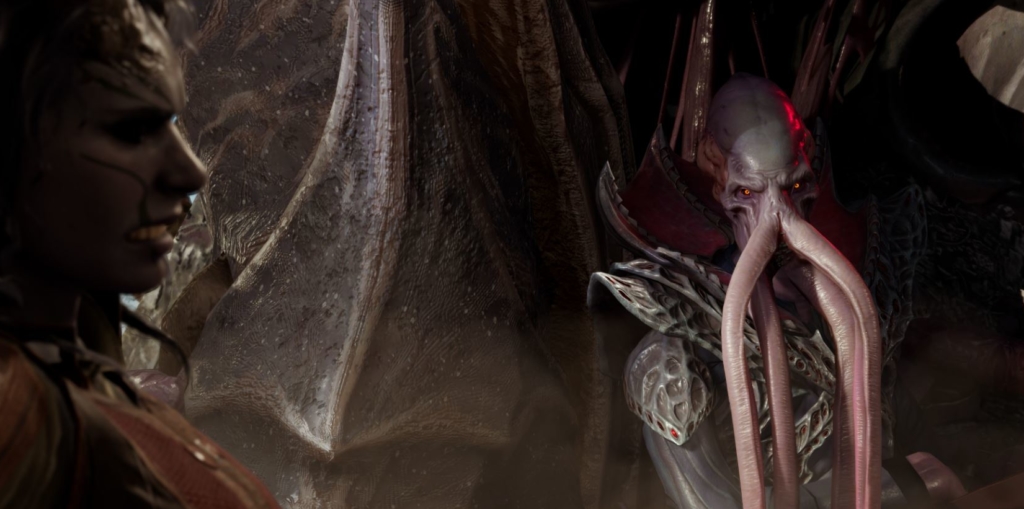D&D: How To Make Fighting A Darklord (Or Other Boss) Spectacular


Now that Van Richten’s Guide to Ravenloft is here, and Darklords are back, you might be wondering, how do you make a boss fight big and bad?
Boss fights are an iconic part of Dungeons & Dragons–in fact, D&D gave us some of the earliest boss fights in the first place. It’s easy to take ’em for granted, they make sense, at the end of a long dungeon, you have a fight against a powerful monster, like a dragon, and if you succeed you get a lot of loot and also a sense of accomplishment. It’s a great way to signify the end of a story/adventure. And if you’re playing with something like Van Richten’s Guide to Ravenloft, which introduces the Darklords as the powerful malevolent entities at the heart of each of the domains of dreads, you want a fight to feel memorable. After all, throwing down against the god-brain of Bluetspur shouldn’t feel like fighting just another monster. It should feel distinct.
But what can you do? Here are a few techniques to make fighting a Darklord (or other epic encoutner) feel special.
Make it feel Different
When you fight against a boss monster, you wanna make it stand out. And one way you can do that is by making the game feel different:
- Break the rules of the game in interesting ways
- A boss should feel special, whether it’s an ability they do that’s outside the norm (like sacrificing a goblin minion to avoid damage), a property they possess like a unique resistance, or a peculiar weakness that gives players a chance to use familiar abilities in new ways
- Give your players multiple things to do throughout the fight
- Don’t make a fight just about reducing the enemy’s hit points to zero. What story can you tell while you’re fighting a boss? What skills can your players use to have an impact on the fight?
- What other things can they do in the fight? Are there crystals to smash? Victims to rescue? Secret tomes to keep out of the villain’s hands? A fight that’s just a hit point race can be fun, but it’s hardly different.
- Vary the pacing of the encounter
- Break your battle up into different phases. You don’t have to be a mythic monster out of Theros to use hit point triggers. Maybe once the boss loses 25% of their hit points, they shift into chase mode and the players have to run an obstacle course. Or they transform into a werewolf. Or whatever. Vary up the beats of the fight to make it feel cool.
- Make it challenging for the players as well as the characters
- Don’t be afraid to make the boss a bit of a puzzle. Maybe their resistances shift — being resistant to fire triggers a vulnerability to cold, or the like.
Set the Stage
Now that you’ve made an encounter that stands out from the daily grind, it’s time to get players excited about it. A boss fight is a reward for your players, and for you. It’s a treat that everyone gets for making it to the end. It’s a chance to show off, so you’ve got to hype it up. Like a WWE match, you’ve got to cut some promos.
Other media have this happen all the time. Whether it’s the brief encounter where the party catches the villain just after finishing some heinous act, and the villain taunts them before dashing away, or moments where you fight minions at the behest of the boss. You want to give your boss a chance to catch some heat, to basically loom large as a threat or a taunt to the players. You want to let them know that they’re in for a different fight too.
If your boss has some special powers, now’s the time to foreshadow it.
If you want your players to do something different, you’ve got to foreshadow that as well. Maybe they’ve been using Arcana to break special wards on doors–a skill they’ll use to bypass the villain’s own magical wards making them vulnerable for attack in the epic duel. Or maybe they’ll learn that Nature can help identify which of the plants in the villain’s lair are toxic to lycanthropes, etc. Let the players know both in and out of character, that something cool is coming.
Time to Shine
The dirty secret to any good boss fight, is that while it might seem like it’s all about fighting an epic villain, it’s really about making the characters (and players) feel as badass as they possibly can. The moments we love are the clutch natural 20 or the time you remembered the Immovable Rod and the Sovereign Glue–moments like those highlight your players being clever and their characters being badass.
So if you want to make this fight memorable, look for ways to let each character shine. Do you know your Wizard loves fireball? Give ’em something cool when they do it. You’ve spent the last however many hours learning what they like to do, now’s the time to make the basic moves feel spectacular.
Don’t Forget the Story
A boss fight is also a story. It has its own beginning and middle, and it has an end too–and a lot of times we can let the ending kind of fall off. But not you. You know what it means if the characters win, or if they lose. And it doesn’t have to be whether the characters kill the boss or not. A good boss fight might not even be about killing the boss–it could be about fighting an unstoppable foe and holding them off just long enough for people to escape.
Or distracting them long enough that the stellar conjunction ends and they lose the channel to their far realm master. So think about what characters stand to gain–and what they stand to lose. Win or lose, actions have consequences. And they should all center around what the players do, and what the characters want.
Talk it Out
Every big climactic battle is soulless without considering what the characters want–and without giving the enemies a chance to interact beyond just fighting or exchanging witty banter. Fighting can do so much more than just ‘reduce hit points’. It can prove a point. A fight might be a chance for characters to argue their worldview.
Boss fights are a time for big ideas and grand speeches. But even if you don’t have a grand monologue, there are plenty of places to tell the story–look at the ending of Critical Role, the final boss reacted to what the Mighty Nein were doing on a personal level. The moments in between throwing punches help give the fight the emotional weight that takes it over the top. Punctuate an attack with some dialogue–or better yet, build in breaks where the characters can recover to help explore the story.
Whatever you do, put the focus on the players, and make the boss react to them (rather than looking to say some melodramatic speeches for the sake of sounding like a boss fight) and you’ll find them eager to say things back.
Here are some more resources about building a better boss fight:
D&D Boss Fights:
Video Game Boss Fights:
GDC talk on Boss Battle Design Fundamentals
Hope you enjoyed these tips for beefing up your boss battles. If you’d like to see more like this, please let us know–and as always, Happy Adventuring!






